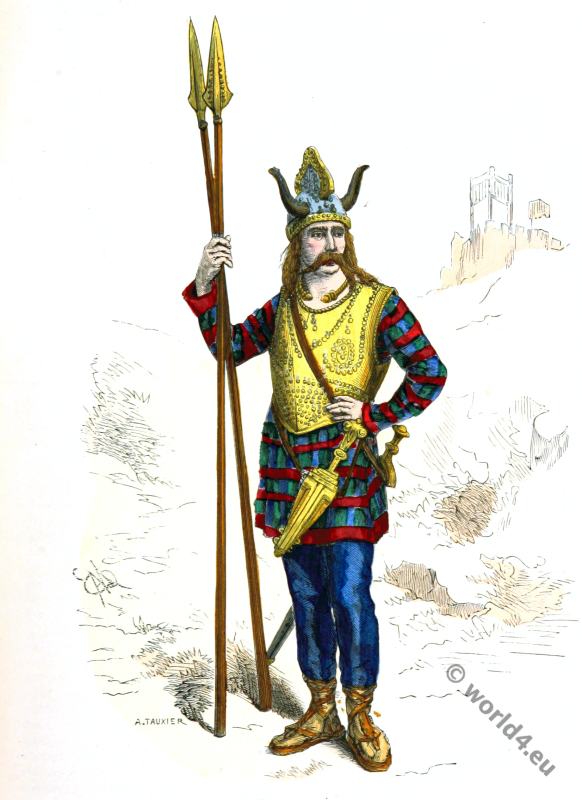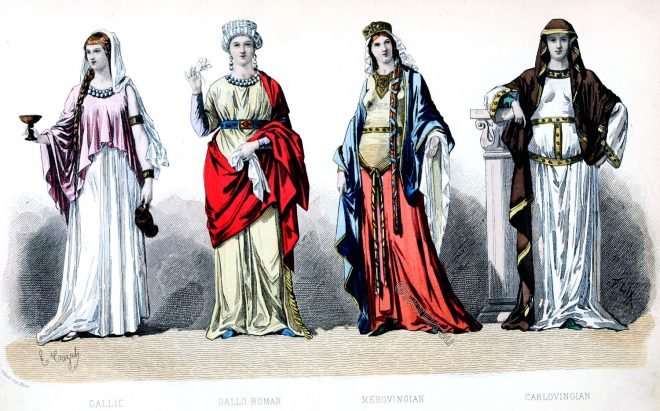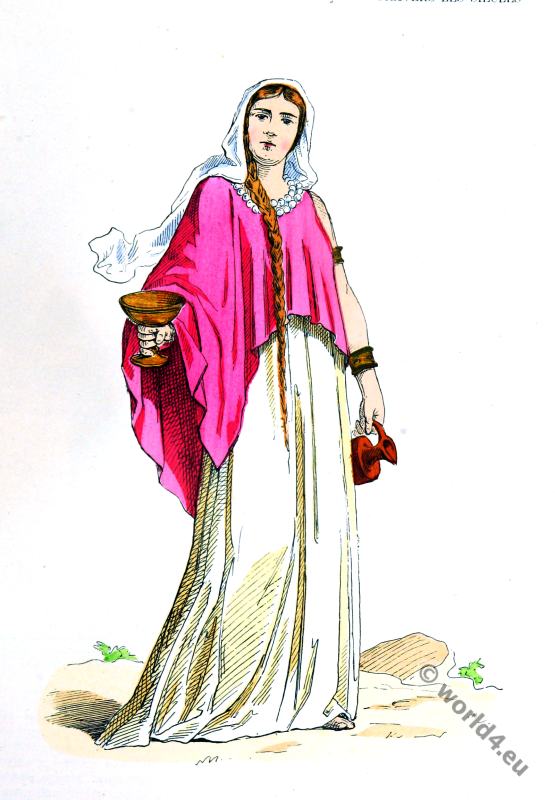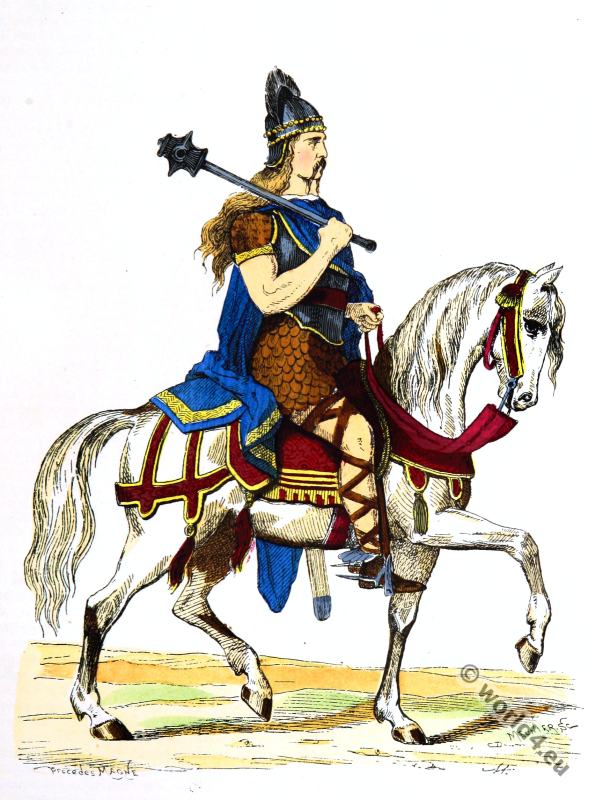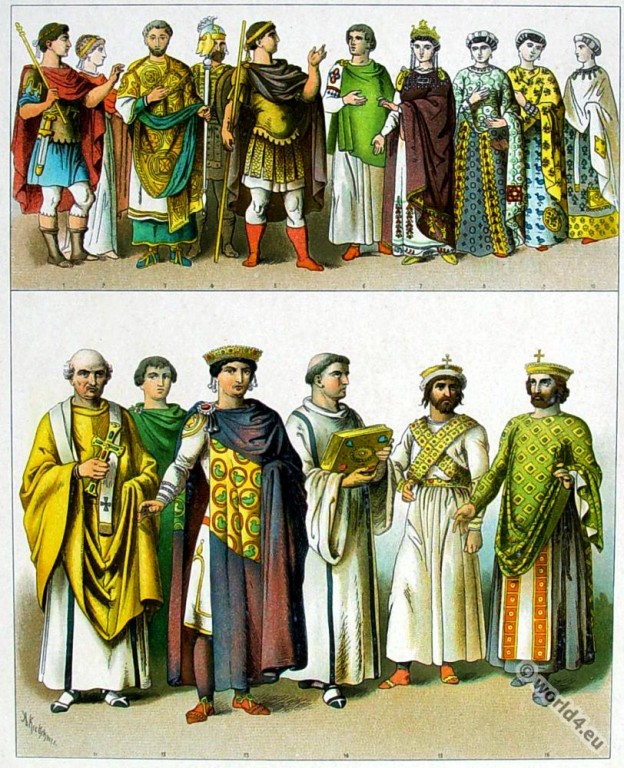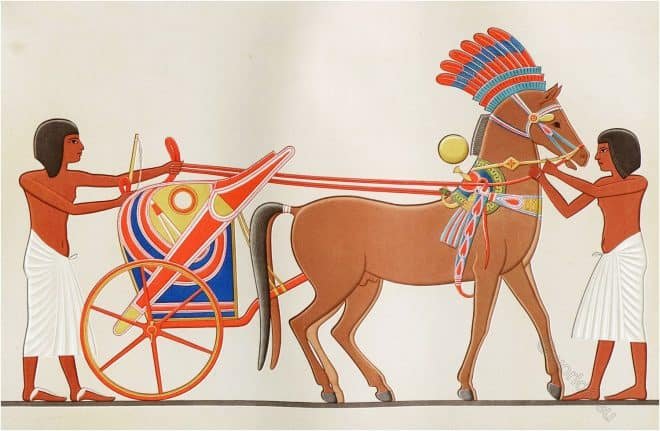Gallic leader before the Roman conquest. 1st century. Gaul independent.
Category: Ancient
The Gallic and Gallo-Roman costume period.
Gallic period—Woad, or the pastel — Tunics and boulgètes — “Mavors” and “Palla” — Cleanliness of the Gallic women — The froth of beer or kourou — The women of Marseilles; their marriage-portions — Gallo-Roman period — The Roman garment — The stola — Refinement of elegance — Extravagant luxury of women — Artificial aids — A vestiaire or wardrobe-room of the period — Shoes — Jewels and ornaments — The amber and crystal ball — Influence of the barbarians.
Merovingian queen costume from the 5th to the 8th century.
Merovingian queen costume from the fifth to the eighth century.
Young Gallic Woman 5th to 7th century
Young Gallic Woman 5th to 7th century.
A leader of the Franks. Salian Frankish 5th century
Un chef des Franks. (D’après Monfaucon.)
Byzantine empire costumes, 300-700 A.D.
Theodosius I also known as Theodosius the Great, Justinian I, Theodora, Byzantine empress a.o.
Byzantine silk fabrics. 6th to 7th c.
Sasanian type stylized flower. The Riders are in the late Roman costume.
Chariot relating to a prince. Tell el-Amarna – 18th dynasty.
Chariot relating to a prince. Tell el-Amarna – 18th dynasty, called the Amarna period of ancient egypt.
Back of hunting. Necropolis of Thebes.
Painting: Return from the hunt (Thebes Necropolis – 17th dynasty)
Ancient Egypt boat hunter from Beni Hasan
Return of the boat hunter (Beni Hasan – 12th Dynasty.)

